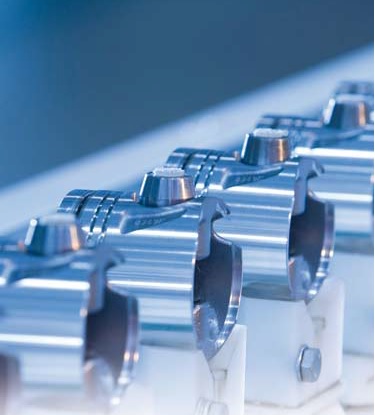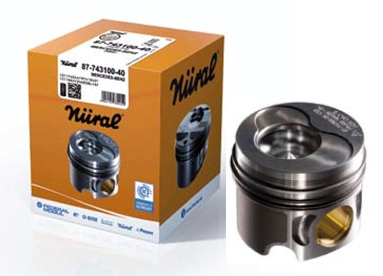Bottom End

Piston TechnologyAutomotive manufacturers are under growing governmental pressures to reduce CO2 emissions.
This coupled with a consumer demand for better fuel economy has forced OE manufacturers to adapt and develop new technologies. This has had a direct effect upon modern engines and more specifically piston technology. Which recent OE piston technologies are now being introduced into the aftermarket? What should engine rebuilders know about these pistons? Aftermarket products logically reflect OE trends. The engineering criteria driving piston development at the OE level are the need to reduce component mass and weight, minimize friction and enable significantly increased mechanical and thermal loads. How does piston design reflect the overarching trends in engine design and performance? Piston technology is at the very centre of engine manufacturers’ strategies to increase fuel efficiency, reduce emissions of harmful gases, minimize NVH (Noise, Vibration, Harshness) issues and maximise engine performance and durability. I n general, F-M is seeing significantly higher specific power output and, of course, higher cylinder pressures and temperatures. What role are OE suppliers such as F-M playing in increasing engine performance, efficiency and environmental sensitivity through piston technology? Through direct and enabling contributions; an example of a direct contribution is advanced metallurgies and component designs that have allowed for reduced component weight, mass and friction. Enabling solutions include metallurgical and design enhancements that permit increased cylinder pressures and temperatures, higher specific output and the ability to use alternative fuels. What is the EconoMiser™ piston and what role will it play at OE and aftermarket levels? The EconoMiser™ is a proven OE piston technology that helps significantly reduce frictional loss through a lightweight but very strong architecture, improved elasticity and ovality and a variety of exclusive skirt coatings. This approach has led to a 34 percent reduction in frictional loss as compared to conventional OE pistons. The reduction in piston mass is even more impressive; F-M has achieved a 45 percent reduction since 1995 while fatigue strength has increased by up to 40 percent. Cast aluminium pistons have traditionally been fairly “inelastic”, yet we now see that skirt elasticity is a characteristic of the latest OE aluminium pistons. What is the importance of this characteristic? Elasticity is important due to increased dynamic cylinder bore distortion related to rising combustion pressures and temperatures. The piston skirt obviously bears the brunt of this punishment; however anti-friction skirt coatings certainly help to address this challenge. But it is also very important, at an early product development phase, to use advanced dynamic piston analysis methods to bring the local skirt surface pressure to the correct, low level. How can engineers balance the demand for smaller and lighter components and increased cylinder pressures and thermal loads? Engineers can accommodate all demands as defined by the engine manufacturer. While it might seem that some objectives are mutually exclusive – reduced component mass versus increased fatigue strength, for example – F-M has been able to make significant progress in multiple areas through metallurgical advances. F-M has made improvements by leveraging the latest computer aided engineering tools and employing surface treatments, coatings and other processes that enhance the piston’s operating characteristics. How are piston rings changing for today’s high-output, high-temperature engines? Rings play a significant role in achieving increased engine efficiency, power, reliability and environmental sensitivity. The rings have long been a leading contributor to frictional loss, yet reducing ring tension as a means to limit friction can lead to blow-by issues. So you can see that the ring interface is a particularly challenging area for the engineering community. One of the most significant recent advances in ring technology has been Goetze Diamond Coating®, which features a chromium-diamond matrix that dramatically reduces wear to the ring face and cylinder bore and also improves scuff resistance. This exclusive solution is already the preferred choice of OE Ms and has been introduced to the aftermarket. How will these OEM developments impact upon the aftermarket? A common concern for the aftermarket when significant changes in engine design are made by OE Ms is the reparability of engines. However, the engine repair community has the tools, skills and components to rebuild each new generation of engine. As an OE supplier F-M is at the forefront of current and future engine technology. E ach Nüral piston for the aftermarket reflects the unique operating demands of its application based on F-M’s extensive involvement at OE level as well as their insight to the specific requirements of the repair environment. Their OE and aftermarket engineering teams work hand-in-hand in developing precisely the right materials and product architectures for each application. |
Related Articles Related Downloads |
